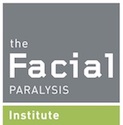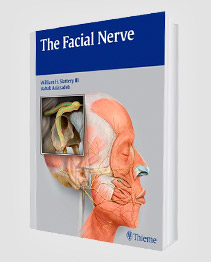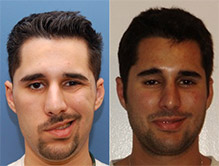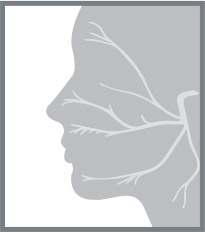Bell’s palsy is a form of severe facial muscle weakness or paralysis that results from facial nerve swelling or damage. The Condition can strike at any age, and it can affect both men and women . Additionally, Bell’s palsy is the most common cause of facial paralysis during pregnancy.
What Causes Bell Palsy During Pregnancy?
High blood pressure and obesity are risk factors associated with Bell’s palsy during pregnancy. Other factors that may increase the risk of Bell’s palsy pregnancy symptoms include:
- Diabetes
- Lyme disease
- Multiple sclerosis
- Myasthenia gravis
- Infection
Furthermore, Bell’s palsy during pregnancy has been associated with preeclampsia, also known as pregnancy-induced high blood pressure, and hemolysis, elevated liver enzymes, and low platelets (HELLP) syndrome, which is a variant of preeclampsia.
For those who are dealing with any Bell’s palsy pregnancy risks, consult with a doctor. This enables a patient to receive a diagnosis and pursue treatment options for Bell’s palsy during pregnancy.
Diagnosing Bell’s Palsy During Pregnancy
The signs and symptoms of Bell’s palsy in pregnancy occur suddenly and typically worsen within 48 hours of onset. The most common presenting symptom of Bell’s palsy during pregnancy, as well as in those not pregnant, is a one-sided facial droop. Other common symptoms, which typically occur on the affected side, may include:
- Loss of feeling in the face
- Headache
- Excessive tear production
- Ringing in the ear
- Drooling
- Impaired speech
- Loss of the sense of taste
- Hypersensitivity to sound
- Inability to close the eye or blink properly
- Difficulty smiling
- Change in speech
Bell’s palsy during pregnancy is often confused with the symptoms of a stroke, which is why immediate medical evaluation is required.
Pregnant women are three times more likely to experience Bell’s palsy than non-pregnant women, with a predominance in the third trimester. Several theories exist as to why there is an increased incidence of Bell’s palsy in pregnancy and include the following:
- Increased total body water leading to swelling and/or compression of the facial nerve
- Weakened immune system, especially in the third trimester, which can lead to the reactivation of the herpes simplex virus (HSV), the causative organism for “cold sores”
- Increased blood clotting factors
- Elevated levels of the female hormones estrogen and progesterone.
Best Bell’s Palsy in Pregnancy Treatment
The treatment of Bell’s palsy in pregnancy is controversial. Some physicians choose not treat with steroids or antivirals, especially occurrences in the first trimester. Others choose to treat Bell’s palsy during pregnancy, especially occurrences in the third trimester. Steroids have been rated as “highly effective” treatment for Bell’s palsy during pregnancy, while antivirals have been rated as “possibly effective” only when combined with steroids (not when used alone). Physical therapy is another option for Bell’s palsy in pregnancy treatment, as it is safe and does not require medication, and can also be continued months after giving birth.
Bell’s Palsy Post-Pregnancy
After delivery, women may still be susceptible to Bell’s palsy. There is a significant number of women who develop Bell’s palsy post-pregnancy, usually seven to 10 days after delivery.
Women who experience Bell’s palsy symptoms after childbirth should pursue treatment immediately. Bell’s palsy that goes undiagnosed or untreated can lead to permanent facial paralysis.
Recovering from Bell’s Palsy Post-Pregnancy
In general, those who experience Bell’s palsy will experience a full recovery within 6 months. Unfortunately for Bell’s palsy during pregnancy, the prognosis for complete recovery isn’t as great as the general population, 52% vs. 80%, respectively. It should be noted that the poorer outcomes reported are likely related to the past reluctance of physicians to prescribe steroids and antivirals in treatment. Today, management of Bell’s palsy in pregnancy should mirror that of nonpregnant individuals and include steroids combined with antivirals, with the exception of first trimester cases.
What if Bell’s Palsy Does Not Resolve Post-Pregnancy?
Only 52% of women who develop Bell’s palsy during pregnancy recover completely. If Bell’s palsy symptoms last longer than 8 months in pregnant (and non-pregnant) females, consideration should be given to long-term treatment options, as there is usually permanent one-sided (unilateral) facial paralysis. Novel treatments for persistent/permanent Bell’s palsy symptoms post-pregnancy include Botox, neuromuscular retraining (NMR), and selective neurolysis.
Botox injections can provide safe, reliable, and painless treatment of permanent Bell’s palsy post-pregnancy. When administered to the normal side of the face, the nonsurgical injections relax the overactive muscles, restoring facial symmetry and improving facial appearance. All this can be accomplished in a 10 to 15-minute outpatient office visit with no downtime. You can return to your normal daily activities immediately after Botox injections. Results may be noticeable in as little as 24 hours after the procedure and reach maximal levels in 1 to 2 weeks and may persist for as long as 4 months.
NMR is a form of physical therapy (PT) for permanent Bell’s palsy post-pregnancy. It is administered by an experienced occupational therapist or physical therapist with training in neuromuscular therapy. A personalized PT protocol will be formulated to fit your exact needs and provide optimal results. NMR is typically provided in conjunction with Botox injections for permanent Bell’s palsy.
Selective neurolysis is a state-of-the-art surgical treatment option for permanent Bell’s palsy post-pregnancy. The surgery provides reanimation of the smile that is lost with persistent Bell’s palsy. The procedure involves intricate mapping of the facial nerves to weaken those nerves counterproductive to the smile mechanism. The surgery is performed in an outpatient/same-day surgery facility with minimal risks and downtime. Results may be noticeable as soon as 1 day after surgery and are typically permanent.
Can you Prevent Bell’s Palsy?
There is no surefire solution to prevent Bell’s palsy during pregnancy, but the condition can be treated. If women display symptoms of Bell’s palsy at any point during their pregnancy, they should consult with a doctor. Then, these women can receive a medical evaluation to determine if they are coping with Bell’s palsy. They can also pursue treatment options to correct Bell’s palsy symptoms before they escalate.
Why Seek Bell’s Palsy Pregnancy Treatment from a Facial Paralysis Expert
When it comes to Bell’s palsy in pregnancy treatment, there are many reasons to partner with a facial paralysis expert, such as:
1. Comprehensive Experience
A facial paralysis expert understands the relationship between Bell’s palsy and pregnancy and can share their insights with patients. As a result, the expert can put patients at ease as they undergo an evaluation and explore ways to address their Bell’s palsy symptoms.
2. Personalized Care
A facial paralysis expert is committed to helping a patient correct their Bell’s palsy symptoms, as quickly and effectively as possible. To accomplish their goal, the expert devotes significant time, energy, and resources to provide a custom treatment plan. The expert also delivers personalized care at all stages of treatment.
3. Proven Work Ethic
A facial paralysis expert recognizes that every patient is different, and the best Bell’s palsy treatment varies based on the patient. As such, the expert works diligently to understand a patient dealing with Bell’s palsy during pregnancy. This allows the expert how to properly treat Bell’s palsy and prevent it from recurring.
4. Commitment to Safety
A facial paralysis expert puts patients’ safety first. Rather than recommend a Bell’s palsy in pregnancy treatment that could compromise a patient’s wellbeing, the expert learns as much as possible about the patient before making a recommendation. The result: the patient can undergo a Bell’s palsy treatment that simultaneously limits risk and delivers the best-possible results.
5. Optimal Results
A facial paralysis expert does everything possible to limit Bell’s palsy pregnancy complications. The expert performs an in-depth patient evaluation and tailors treatment to the patient. Also, the expert works closely with the patient, monitors their progress throughout treatment, and ensures the patient can reduce or eliminate their symptoms of Bell’s palsy.
Meet with a Bell’s Palsy Pregnancy Treatment Expert
Dr. Babak Azizzadeh of The Facial Paralysis Institute is globally recognized for his facial plastic and reconstructive surgery and head and neck surgery expertise, and he is happy to help patients coping with Bell’s palsy during pregnancy. To learn more or to schedule a consultation with Dr. Azizzadeh, please contact us online or call us today at (310) 657-2203.
Bell’s Palsy Post-Pregnancy
After delivery, women may still be susceptible to the disease. There are a significant number of women who develop Bell’s palsy post-pregnancy, usually 7 to 10 days after delivery, for the same possible reasons alluded to earlier.
Request your consultation with Dr. Azizzadeh today
Call us at (310) 657-2203 to schedule an appointment.
Schedule a Consultation




